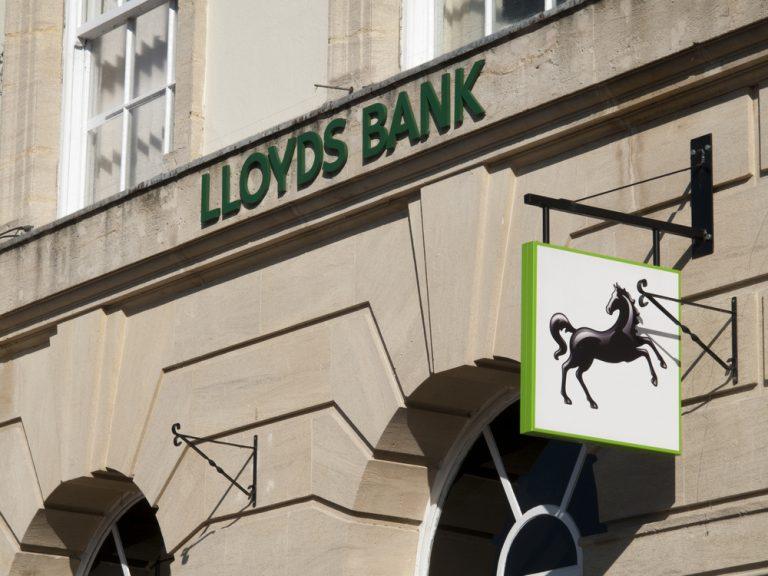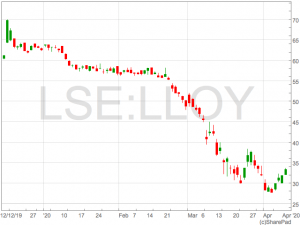
The Lloyds share price (LON:LLOY) has been heavily hit during the coronavirus pandemic selloff. Lloyds shares were down over 50% from 2020 highs to the lowest levels around 27p.
On the face of it, this has presented a buying opportunity for investors seeking to allocate capital to shares trading at multi-year lows.
However, investors must assess the fundamentals of Lloyds compared to peers to gauge relative valuation.
Factors such as the coronavirus lockdown, government stimulus and low interest rates are having a significant impact on Lloyds shares, but it is important to compare how these factors have impacted other companies.
Lloyds share price
Lloyds is currently trading 33p meaning the company has a historical PE Ratio of 9.5x based on FY 2019 earnings attributable to ordinary shareholders. Earnings multiples are likely to be the most prominent valuation metric used by investors during a UK recession.
With the Lloyds dividend recently scrapped on instruction by the Bank of England, Lloyds ordinary shares are no longer proving a yield so it is difficult to value the company based on investor income using models such as the dividend discount model.
It must be noted that earnings for Lloyds and their peers are going to be destroyed during the coronavirus-induced recession but investors will be looking forward to an economic recovery and a return to normal earnings.
With this in mind, it is viable to use historic earnings as a gauge of future earnings, when assessing valuation of Lloyds and other UK banks.
 UK Banks
UK Banks
On an earnings basis, Lloyds provides some of the best value among FTSE 100 shares but not UK banks. With a historical PE Ratio of 9.53x, Lloyds is better value than HSBC, who trade at 14.36x but more expensive than the best of the UK banks.
However, Lloyds trades at a higher valuation than Barclays and RBS whose historical PE Ratios are 6.8x and 4.59x, respectively.
| Company | Share Price (P) | Market Cap (£m) | 2019 FY Profit* (£m) | PE Ratio |
| LLOY | 33.28 | 23,443 | 2,459 | 9.53 |
| BARC | 96.5 | 16,735 | 2,461 | 6.80 |
| RBS | 118.9 | 14,382 | 3,133 | 4.59 |
| HSBC | 420.9 | 85,721 | 5,969 | 14.36 |
| STAN | 451 | 14,252 | 2,303 | 6.19 |
*Profit attributable to ordinary shareholders
Lloyds’ multiple premium to most other UK-listed banks means it is far from the best value pick of the sector and other banks could offer better upside if they were to rally to match Lloyds valuation on an earnings basis.
Earnings multiple’s are of course not the only factor the market takes into consideration. Factors such as capital ratios and geographical exposure have a large influence on banking shares in particular.
Lloyds is one of the most heavily traded UK shares which tends to make it a ‘go-to’ share for individual investors, which may also explain the higher valuation than its banking peers.
However, due to their sharp fall, the Lloyds share price still offers better value than many household name shares such as Tesco, Royal Dutch Shell and Vodafone, who all have PE Ratios well above 10.

